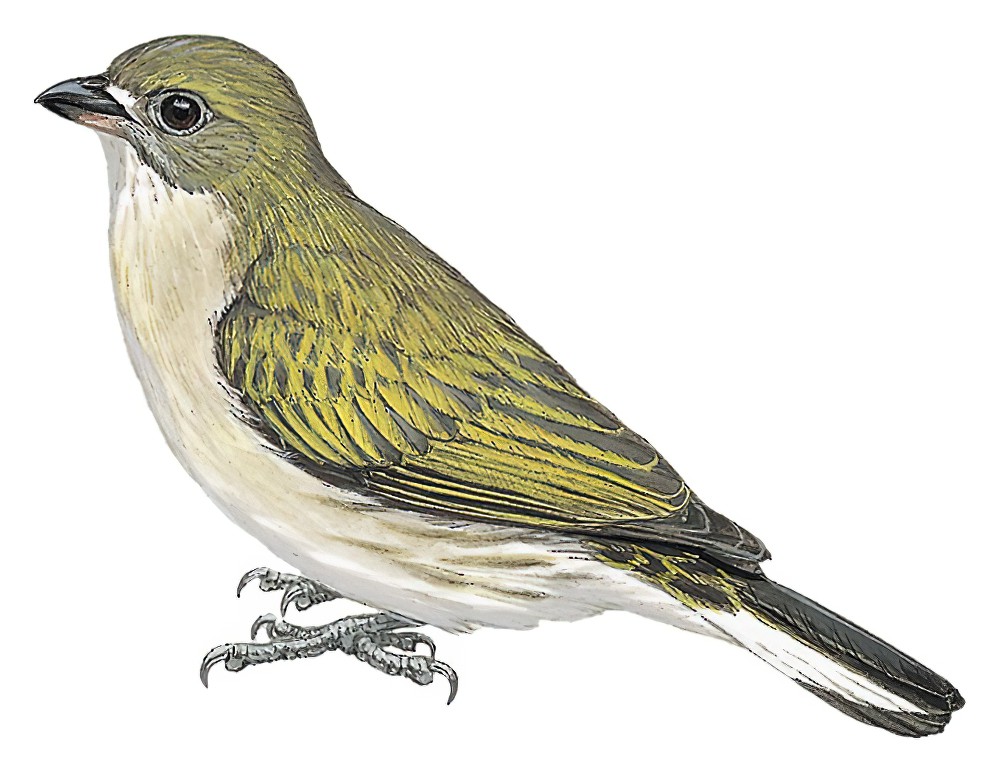Pallid Honeyguide / Indicator meliphilus

Pallid Honeyguide
SCI Name:
Protonym: Melignothes exilis meliphilus Proc.U.S.Natl.Mus. 28 p.869
Taxonomy: Piciformes / Indicatoridae / Indicator
Taxonomy Code: palhon1
Type Locality: Taveta, Kenya Colony.
Author: Oberholser
Publish Year: 1905
IUCN Status: Least Concern
DEFINITIONS
INDICATOR
(Indicatoridae; Ϯ Greater Honeyguide I. indicator) L. indicator, indicatoris guide, one that points out < indicare to show < index, indicis sign, informer < in among; dicere to tell (cf. specific name Cuculus indicator Sparrman, 1777); "The Dutch settlers thereabouts have given this bird the name of Honiguyzer, or Honey-guide, from its quality of discovering wild honey to travellers ... Not only the Dutch and Hottentots, but likewise a species of quadruped named Ratel (probably a new species of Badger), are frequently conducted to wild bee-hives by this bird, which, as it were, pilots them to the very spot. The honey being its favourite food, its own interest prompts it to be instrumental in robbing the hive, as some scraps are commonly left for its support" (Sparrman in Stephens 1815); "INDICATOR. HONEY-GUIDE ... THE Honey-guides form a very peculiar genus ... the feathers are short, hard, and pressed close to the body: the skin is thick, and the fibres so close that it is difficult to pierce it even with a pin, an admirable provision of nature to guard these birds against the stings of bees, as it forms an almost impenetrable coat of mail. Sparrman first described the Honey-guide, which he placed in the genus Cuculus, to which it is only related in having the toes placed two and two. ... SPARRMAN'S HONEY-GUIDE. (Indicator Sparrmanii.) ... GREAT HONEY-GUIDE. (Indicator major.) ... LITTLE HONEY-GUIDE. (Indicator minor.)" (Stephens 1815); "Indicator Stephens, in Shaw's Gen. Zool., 9, pt. 1, 1815, p. 131. Type, by tautonymy, Indicator Sparrmanii Stephens = Cuculus indicator Sparrman." (Peters 1948, VI, 65). The Greater Honeyguide is well known for leading mammals (especially the Ratel and man) to bees’ nests, enabling the stronger mammal to break open the nests and benefit from the honey, whilst the honeyguide eats the grubs, bees, and wax. Local superstition demands that some token honey is left for the honeyguide, otherwise it will next lead the searcher to stumble upon a hidden leopard or venomous snake.
Synon. Melignostes, Melignothes, Meliphagus, Melipodagus, Morocus, Prodotes, Pseudofringilla, Pseudospiza.
indicator
L. indicator, indicatoris guide, one that points out < indicare to show < index, indicis sign, informer < in among; dicere to tell.
● “Greenish above, greyish below, which with white tail make it look like large honeyguide” (Keith et al. (ed.) 1992) (Baeopogon).
meliphilus
Gr. μελι meli, μελιτος melitos honey; φιλος philos loving < φιλεω phileō to love < φιλος philos lover.
SUBSPECIES
Pallid Honeyguide (meliphilus)
SCI Name: Indicator meliphilus meliphilus
meliphilus
Gr. μελι meli, μελιτος melitos honey; φιλος philos loving < φιλεω phileō to love < φιλος philos lover.
Pallid Honeyguide (angolensis)
SCI Name: Indicator meliphilus angolensis
angolae / angolense / angolensis / angolica / angolicus
Angola (Portuguese Angola < Ngola a title of the kings of Ndongo).
● ex “Rollier d’Angola” of Brisson 1760 (syn. Coracias caudatus).
● ex “Angola Vulture” of Latham 1781 (Gypohierax).
● ex “Apiaster angolensis” of Brisson, “Petit Guêpier vert et bleu à queue étagée” of de Buffon 1770-1783, and “Angola Bee-eater” of Latham 1782 (?syn. Merops pusillus).
● ex “Linotte d’Angola” of Brisson 1760, and “Angola Finch” of Latham 1783 (syn. Ochrospiza atrogularis).
● ex “Fringilla ventre caeruleo. Blue-belly’d Finch” of Edwards 1750 (Uraeginthus).
● Erroneous TL. Angola (= Brazil); ex “Black Gros-beak” of Edwards 1764 (Sporophila).
UPPERCASE: current genus
Uppercase first letter: generic synonym
● and ● See: generic homonyms
lowercase: species and subspecies
●: early names, variants, mispellings
‡: extinct
†: type species
Gr.: ancient Greek
L.: Latin
<: derived from
syn: synonym of
/: separates historical and modern geographic names
ex: based on
TL: type locality
OD: original diagnosis (genus) or original description (species)












